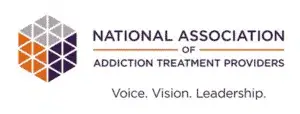Key Takeaways
- Alcohol detox shakes are a symptom of withdrawal from prolonged heavy drinking, affecting primarily the hands.
- These shakes are a part of a broader condition, called alcohol withdrawal syndrome (AWS), which occurs when a heavy drinker stops consuming alcohol.
- Other symptoms of AWS can range from mild symptoms, such as anxiety and depression, to severe conditions, such as seizures and delirium tremens.
- Medical detoxification is recommended for managing withdrawal, using medications like benzodiazepines to alleviate or reduce symptoms.
- Therapy and counseling are also helpful in managing alcohol withdrawal syndrome and the symptoms it causes.
- Preventing alcohol detox shakes involves medical supervision, gradual reduction of alcohol intake, and stress-reduction techniques.
What Are Alcohol Detox Shakes?
Alcohol detox shakes, commonly referred to as tremors, are involuntary shakes that primarily affect the hands, but they can also manifest in other parts of the body.
They’re a common symptom of alcohol withdrawal experienced by individuals who abruptly stop or significantly reduce their alcohol intake after prolonged, heavy drinking. They are a physical sign of the body’s dependence on alcohol and its attempt to readjust to a state of functioning without it.
Detox shakes are caused by the disruption of neurotransmitter activity within the brain. Alcohol consumption affects the balance between the inhibitory neurotransmitter gamma-aminobutyric acid (GABA) and the excitatory neurotransmitter glutamate. Over time, this balance is altered, leading to a reliance on alcohol to maintain homeostasis.
When alcohol is no longer present, the body experiences a rebound effect, resulting in heightened excitatory neurotransmitter activity and a range of withdrawal symptoms, including shakes.
This Season, Give Yourself the Gift of a Fresh Start.
Whether you are struggling with addiction, mental health or both, our expert team is here to guide you every step of the way. Don’t wait— reach out today to take the first step toward taking control of your life.
Risk factors for developing alcohol detox shakes include the frequency and volume of alcohol consumption, with heavy, daily drinkers being at greater risk. Medical detoxification is often the recommended first step in treating alcohol withdrawal, as it provides a safe environment to manage the immediate physical symptoms while preparing for longer-term treatment strategies to address the underlying addiction.
Symptoms That Often Accompany Alcohol Detox Shakes
Alcohol detox shakes are a physical indication of the body’s adjustment after ceasing alcohol intake. They are part of a broader condition known as alcohol withdrawal syndrome (AWS).
The onset of AWS can range from 6 to 24 hours after the last alcoholic drink is consumed. In addition to alcohol detox shakes, AWS may manifest a spectrum of symptoms, including:
- Anxiety
- Fatigue
- Sweating
- Rapid heartbeat
- Anxiety
- Clammy skin
- Agitation
- Confusion
- Hallucinations
- Seizures
- Delirium tremens
Typically, the symptoms vary over time. Within hours of the last alcohol consumption, individuals may experience somewhat mild symptoms, but they generally increase in severity, peaking between 24 and 72 hours after the last drink.
The intensity of detox shakes and associated symptoms can vary greatly, influenced by the duration and quantity of alcohol use.
In some cases, they can be mild, while in others, they can be part of the life-threatening delirium tremens (DT). Heavy and long-term drinkers face a heightened risk for severe withdrawal symptoms; in fact, up to 30 percent of individuals with AWS may experience seizures. These symptoms underscore the importance of medical supervision during detox to ensure safety and manage discomfort.
Managing Alcohol Detox Shakes: Treatment Approaches
Alcohol detox shakes require careful management to ensure safety and comfort during detoxification. The best management strategies generally incorporate both medical treatment and therapeutic interventions.
Medical Treatment for Alcohol Detox Shakes
Alcohol detox shakes, or tremors, are a common and challenging symptom of alcohol withdrawal syndrome (AWS).
Various medications have been identified and employed to alleviate the symptoms associated with AWS, including benzodiazepines and anticonvulsant medications, among others.
Benzodiazepines are the cornerstone of treatment for alcohol detox shakes, due to their sedative properties and their effectiveness in reducing agitation, preventing seizures, and mitigating the severity of withdrawal. Common benzodiazepines prescribed include:
- Diazepam (Valium)
- Lorazepam (Ativan)
- Chlordiazepoxide (Librium)
- Oxazepam
Anticonvulsants and adrenergic medications may also be used in the treatment of AWS to address specific symptoms or in cases where benzodiazepines are contraindicated. Commonly prescribed examples include:
- Baclofen
- Naltrexone
- Beta-blockers
- Anticholinergic medications
Therapeutic Interventions for Alcohol Detox Shakes
In addition to medications, therapy and counseling are critical components for managing alcohol detox shakes. During the detoxification phase, a combination of individual and group therapy, alongside family counseling, is often implemented to support the patient’s psychological well-being.
Therapeutic approaches such as motivational interviewing play a significant role in helping individuals understand their desire to change and maintain motivation for sobriety. This form of counseling proves beneficial for those struggling with alcohol dependency who may be ambivalent or resistant to treatment.
Furthermore, 12-step support programs and alcohol education are integral parts of therapy that equip patients with the knowledge and peer support necessary to navigate the recovery journey.
The integration of therapy into the detox process not only addresses the immediate physical symptoms but also lays the groundwork for long-term recovery, reducing the risk of relapse. By providing a safe space for patients to explore underlying issues and develop coping strategies, therapy becomes a cornerstone of effective alcohol treatment programs.
Inpatient and outpatient treatment settings often include these therapeutic services to ensure a comprehensive approach to recovery.
Strategies to Prevent Alcohol Detox Shakes
Alcohol detox shakes are a physical manifestation of alcohol withdrawal, often occurring as a result of cessation from prolonged alcohol use. To prevent these shakes, it is important to understand and implement strategies that address both the physical and psychological aspects of alcohol dependence.
- Medical detoxification under professional supervision is the preferred way to prevent the shakes, as it ensures safety and provides the necessary medical support to manage withdrawal symptoms.
- Gradual reduction of alcohol intake, rather than abrupt cessation, can help minimize the severity of detox shakes and other withdrawal symptoms.
- Stress-reduction techniques such as yoga, meditation, and light exercise can be beneficial in alleviating anxiety and thus reducing the potential for shakes.
- Hydration and nutrition are essential during the detox process and help aid the recovery of the nervous system.
- Engaging in social support networks, including mutual support groups, provides a community of individuals who can offer guidance and encouragement throughout the recovery journey.
- Ongoing therapy and counseling can address underlying issues related to alcohol dependence, promoting long-term sobriety and preventing relapse.
It is essential for individuals at risk of experiencing alcohol detox shakes to seek professional medical advice before attempting to stop alcohol consumption. This approach ensures a safer and more effective transition towards recovery.
Get Help with Alcohol Use Disorder Now
Understanding what makes someone addicted to alcohol can be the first step in helping a person seek treatment. Depending on how bad their alcohol abuse has been or if medically-assisted alcohol detox will be needed for withdrawal symptoms, entering into a treatment center may be a necessary option. Professional medical staff can assist in the difficult process of withdrawal, making the transition into sobriety less daunting.
Alcohol abuse treatment programs teach people how to move into an alcohol-free lifestyle while teaching them healthy coping strategies. They can simultaneously help treat any co-occurring mental health issues.
Contact The Recovery Village Palmer Lake if you have questions about treatment or if you’re ready to get on the path to recovery and end your addiction to alcohol.








